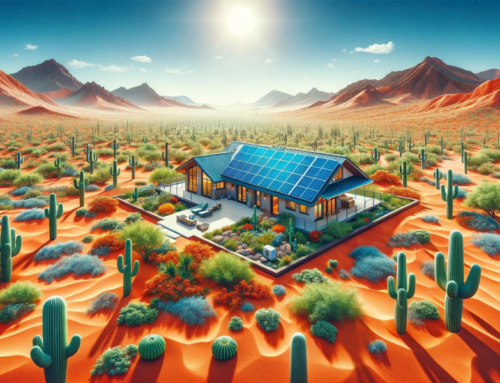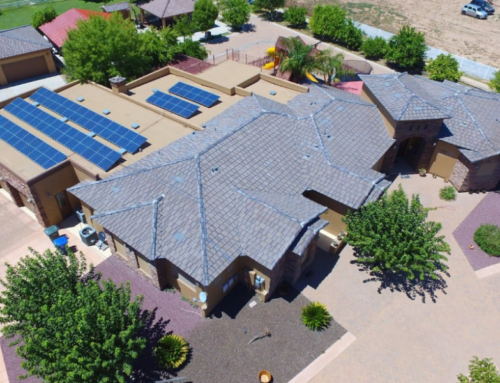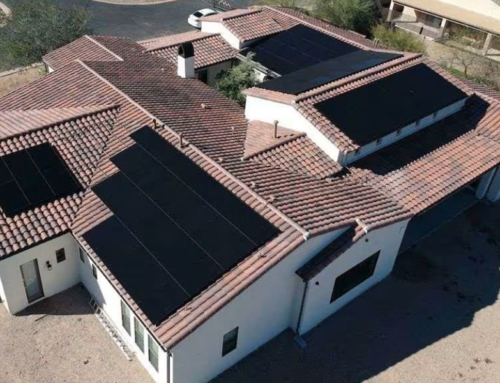By Erick O’Donnell
The financial unpredictability of utility-distributed electric power has been a consistent theme in this column. We have argued repeatedly that the cost of electricity could potentially rise faster than incomes and consumer prices overall, and so far, that has been enough to convince our customers—as well as homeowners around the country—that locking in energy costs with a rooftop solar system is a sensible investment.
But now, the potential for such a price rise is starting to look like a sure thing. That is because of widespread uncertainty and worry over the EPA’s recent proposal to drastically shrink power-plant emissions, which foreshadow a rocky path ahead for utilities with significant greenhouse-gas-emitting assets.
At the same time, APS is scheduled to start paying new solar customers less money for their surplus power, requiring a larger system—and, hence, a larger investment—to generate the savings that will justify the expense.
All this means that if you are interested in going solar but slow to commit, you’re between a rock and a hard place. It’s especially important now, before the end of August, that homeowners switch to solar so that they can avoid getting squeezed from both sides.
As with any other air-quality requirement, the EPA has to show that feasible technologies exist that polluting companies can use to comply with the agency’s proposed rules, and indeed, the agency has concluded that it has done so. In fact, the EPA has described the cost impact of its requirements—including a 90-percent reduction of emissions by 2035—as “negligible.”
Yet certain facts and contrary assessments cast doubt on that claim.
Carbon capture and storage—the technology necessary to comply with the agency’s proposed 90-percent-capture rule— has not quite proven itself as an actual long-term industrial asset. None of America’s plants use it to any significant degree, and, as Politico noted in an article earlier this year, “only one coal plant in the U.S. has ever installed it on a commercial scale, and equipment failures and billions of dollars in cost overruns plagued its few years of service.”
As the technology’s name implies, capturing carbon dioxide is only half the task. There is no infrastructure for transporting CO2 to the places where it must be stored and little movement toward changing that, according to Politico.
Finally, other actions the federal government has taken don’t exactly shore up confidence. On the same day that EPA’s proposed rule was published, the Department of Energy announced an up-to-$45.5-million grant “to advance carbon dioxide (CO2) capture technologies.” Not “implement” the technologies, but “advance” them, presumably from a well, not-so-advanced state of development.
Comments on the proposed rule reveal widespread uncertainty and consternation over the feasibility of CSS, among other aspects of EPA’s rule, suggesting that a smooth transition could be less certain than assumed. Every letter we read that came from an affected industry requested an extension to the EPA’s 60-day period for receiving comments, citing either the complexity of the EPA’s proposed rules, doubt over whether compliance would be as doable or painless as the agency predicted, or both.
And the technology is expensive. The research that the EPA relies on shows the cost of electricity generation (per unit of energy) roughly doubling with the installation of CSS technology.
It’s not hard to figure out what all this means for energy consumers. According to the law of supply and demand, plant shutdowns and technical difficulties entail higher energy prices.
Meanwhile, the buyback rate, the means by which homeowners recoup their investments, continues to fall, making it imperative that homeowners who are interested in solar decide quickly. Homeowners whose systems are operational after August 31 will be paid about 10.6 percent less for the extra energy their systems produce and export to the grid (receiving 7.6 cents per kWh from APS rather than 8.5 cents per kWh). To realize the same economic benefit from their investment, these homeowners will need a system that’s 10 percent larger and, hence, 10 percent more expensive.
The power company isn’t waiting to maximize the value it gets from rooftop solar systems. If you’re ready to put the sun to work for your household, then schedule a meeting with SUNSOLAR SOLUTIONS or call 623-562-9009 to have a design prepared for your home free of charge.







